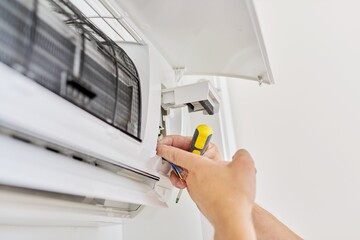
Truck Accessories are popular with consumers and provide them with a way to personalize their vehicle. They range from simple yet affordable, such as a license plate frame, to more costly upgrades, like LED light bars.
Whether you’re out for a day of deliveries in a pickup or driving long-haul in a semi, interior accessories can make the trip more comfortable and enjoyable. Here are a few things to consider before you buy any.
If you want to get the most out of your truck, then there are several accessories that will improve both its appearance and functionality. In addition, many of these accessories are easy to install and won’t break the bank. You can even find some that will help you save on fuel.
If your truck is used for business, then some of these accessories will also be beneficial to your bottom line. For example, a security awning can protect your food truck when it’s not in use and prevent vandalism or theft. You can also customize this awning to match your branding and logo. Other useful commercial truck accessories include a tire rack, which will let you carry multiple tires and save you money on shipping costs. Another handy commercial truck accessory is a recovery strap, which is essentially a long rope that you can use to pull someone or something out of trouble.
Aside from increasing your truck’s utility, these accessories will also help you maintain its value. This is especially important if you plan on selling it or trading it in the future. Many of the best truck accessories can be purchased for a reasonable price, and most professional dealers will offer them at a competitive rate. If you aren’t a do-it-yourself type, then you should hire a professional to install your truck accessories. This will ensure that the work is done correctly and that you don’t end up paying more in the long run by making a costly mistake.
Consumers will often purchase truck accessories on impulse. They might see a product on another truck or in a magazine ad and decide that they want it for their own truck. This can lead to overspending, but if you keep an eye out for deals and promotions, you can sometimes get these products for free.
If you’re looking for a way to add a personal touch to your vehicle, consider tinting your truck. This will not only give it a custom look, but it will also protect the interior of your truck from scratches and other damage. Spray-in bedliners and coatings are also affordable and effective, and they come in a variety of colors and textures. They can also protect your truck from debris and rust, and some will have sound-deadening properties.
Appearance
Trucks are some of the most versatile vehicles on the road today, able to transition from work vehicle to family hauler and back again with ease. They’re also known for their rugged and tough appearance. If you’re looking to enhance your truck’s functionality and style, there are plenty of accessories available to help you do just that. Whether you’re looking for a simple chrome trim piece or a full-on Royalty Core grille, the right accessories can make your ride stand out from the pack.
One of the most popular truck accessories is a tonneau cover. This upgrade protects your cargo from the elements while also adding to your truck’s value. Tonneau covers are available in a variety of styles, including roll-up and tri-fold designs, as well as flexible fabric versions. Some can be installed without any drilling, allowing you to easily access your cargo. They’re also made to withstand harsh weather conditions, such as heavy snow and rain.
Another popular truck accessory is a set of mud flaps. These easy-to-install upgrades are designed to channel water and reduce wind noise while protecting your paint from mud and dirt kicked up by your tires. They’re engineered for each truck and made from a durable material that resists chipping and fading. Plus, they’re backed by a Lifetime Warranty from the manufacturer.
Running boards are another popular pickup truck accessory that combines functionality and style. They allow drivers to enter and exit their trucks more easily, making them ideal for older or disabled drivers. They’re also a great addition to lifted trucks, as they provide a custom look and offer added ground clearance. Other stylish accessories include floor mats and floor liners, which protect the cabin from mud, spills, fish guts, and other unpleasant debris. Look for ones that are laser-cut to perfectly fit your truck and feature a nonslip surface.
If you want to add a touch of luxury and class to your truck, consider chrome interior trim or a spray-on bedliner. These upgrades aren’t only luxurious and stylish, but they can also protect your factory carpet and upholstery from damage. For those who prefer a stealthy style, there are also black accessories that give your truck a dark theme.
Performance
If your truck isn’t quite doing what you need it to do, there are plenty of accessories available to make the vehicle more functional. Some of these upgrades are designed to expand the capability of the truck, while others provide safety or style enhancements. Some accessories are geared specifically for the bed, while others fit above it or in the roof area.
Most accessories are easy to install and may not require any professional help. They can be as simple as a new tire or as complex as a custom exhaust system. The size of an accessory will determine whether it is meant for interior or exterior use. For example, a cargo net or tool box is suited for the bed, while an air compressor and spare tire carrier are more apt for the cab.
The most common truck accessories are practical upgrades that improve the performance of the vehicle. For instance, a toolbox saves space in the bed and keeps tools organized, while a hitch allows you to haul more weight. Other practical truck accessories include mud flaps and bug deflectors, which keep the cab clean and protect the body of the vehicle.
Truck accessories are also a great way to customize your ride and make it your own. Running boards, mud flaps and chrome trim are popular options that give the vehicle a more polished look. There are even truck accessories that allow you to create a whole new appearance, like a blacked-out look.
Regardless of your reasons for adding truck accessories, it’s important to choose the right ones for your needs. There are many different styles and price points to consider, so take the time to shop around and find a shop that offers the products you want at a fair price. Before committing to a purchase, be sure to research the shop online and look at reviews, the selection of products offered, the process for installation and the location. This will help you ensure that the shop is reputable and will do a good job on your vehicle.
Safety
Having truck accessories in place can help to ensure that your vehicle is functioning properly and safely. These accessories can also make the vehicle easier to operate and more comfortable to drive. Many of these products are designed to be durable and are often made from high-quality materials. They can also add a touch of personality and style to your truck.
When driving long distances, it is important to have a way to entertain yourself. Investing in a TV for your semi-truck is a great way to enjoy a favorite show or movie while on the road. You can even mount the device to the windshield so that it is easy to view while driving. This will help to keep you entertained while on the road and will also allow you to stay focused on the road ahead of you.
Another truck accessory that is a must-have for any driver is a set of work gloves. These can be used when loading and unloading cargo, working on the truck, or performing maintenance. They can protect your hands from rough surfaces and sharp edges while also making them more comfortable to hold. They are available in a variety of sizes, so you can find the perfect pair for your needs.
Other truck accessories that can help to improve safety include a flashlight, first aid kit, and jumper cables. These can be helpful if you are stuck on the side of the road or if your truck breaks down. You can also use these items to signal to other drivers that you need assistance.
Truck owners can also get a locking tool box to prevent theft. This is a good option for drivers who do not always carry tools in their truck bed. These can be purchased at most hardware stores or online.
Truck accessories are an excellent way to customize your truck and make it your own. They can also improve the resale value of your vehicle. However, it is important to remember that any alterations that you make will need to appeal to a large market of buyers in order to be successful. Otherwise, you may not be able to recoup the cost of the upgrade.





 Check the Air Filter
Check the Air Filter